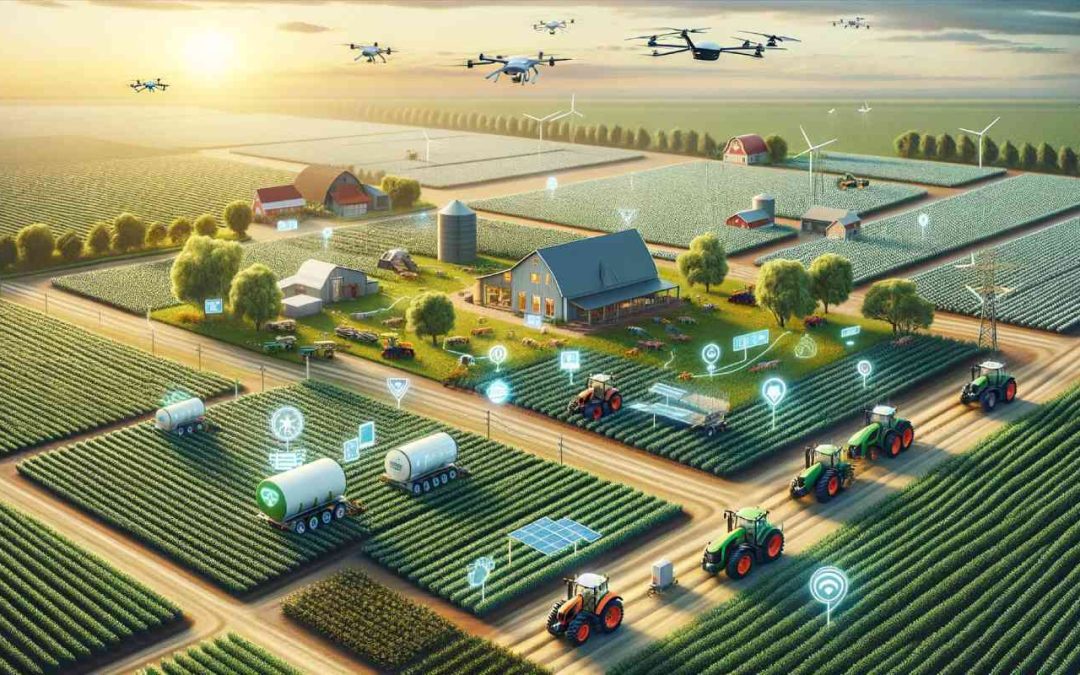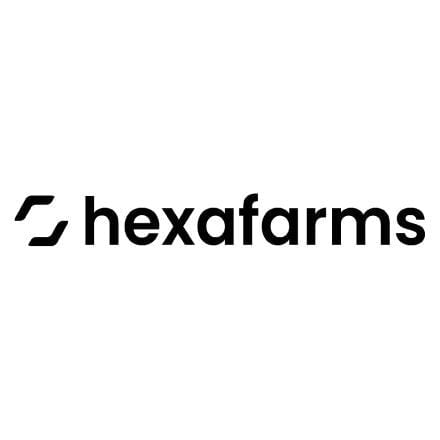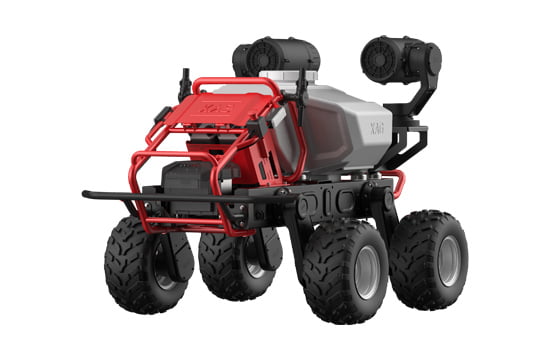In recent years, the agricultural sector has seen a gradual yet significant shift towards incorporating technology, leading to the emergence of “Farming as a Service” (FaaS). This concept brings a modern twist to traditional farming, integrating technological advancements to improve efficiency and sustainability.
- Introduction
- What is Farming as a Service?
- The Role of Technology in FaaS
- Global Reach: FaaS in Different Continents and Countries
- Leading FaaS Companies and Their Technological Solutions
- Market Growth and Future Prospects
- Challenges and Limitations
Understanding the Role of Technology in Modern Agriculture
FaaS represents an approach where services related to farming – from crop management to equipment leasing – are provided through technology-driven solutions. It’s a model that combines the familiarity of traditional agriculture with the benefits of modern technology, offering a more balanced and realistic view of farming’s future.
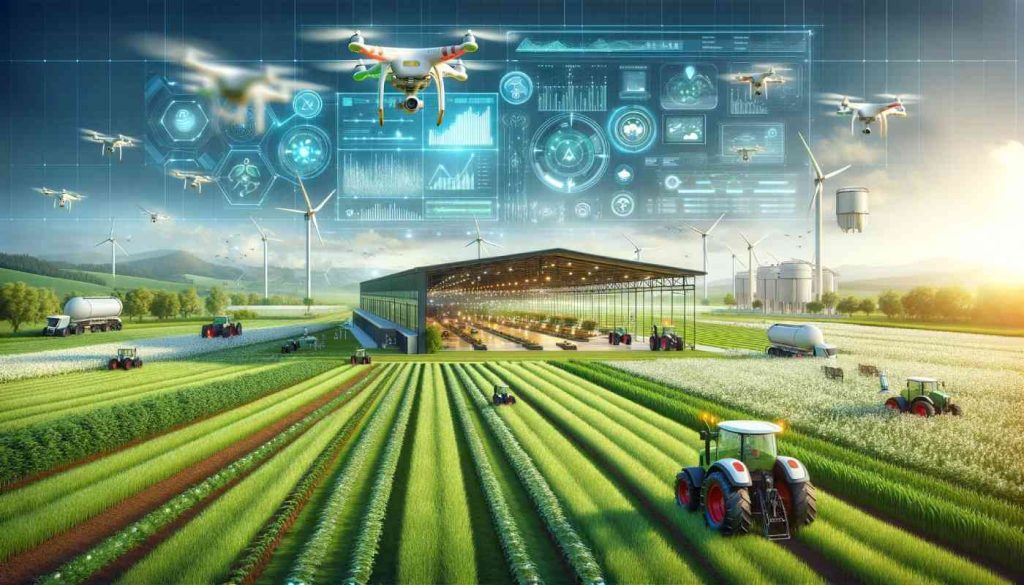
This exploration into FaaS is not about endorsing or selling the idea; it’s about presenting a clear, factual overview of how technology is being integrated into agriculture. We will look at the opportunities this model presents, such as increased efficiency and potential cost reductions, as well as the challenges it faces, including the need for infrastructure development and possible resistance from traditional farming communities.
As we delve into the specifics of FaaS, we aim to provide a comprehensive understanding of its role in contemporary agriculture. This includes examining the technologies that are driving this change, their application in various farming practices, and the global impact of this trend. Additionally, we will highlight some of the key players in this field, illustrating the diverse ways in which technology is being harnessed to reshape farming.
What is Farming as a Service?
Integrating Technology into Traditional Farming
“Farming as a Service” (FaaS) is a model that integrates advanced technologies into traditional farming practices, offering a suite of services aimed at making agriculture more efficient, sustainable, and profitable. This concept borrows from the ‘as a service’ models prevalent in the IT industry, such as Software as a Service (SaaS), and applies it to farming.
At its core, FaaS is about using technology to assist in various farming activities. This includes leveraging data analytics, IoT devices, and AI to optimize farm operations. The services under FaaS can be broadly categorized into three segments:
- Farm Management Solutions: This segment includes precision farming services using tools like hyperspectral imaging technology, sensors for weather and soil health, auto-guidance equipment, and precision irrigation systems. It held the largest market share in 2022, approximately 76.8%.
- Production Assistance: This includes services such as equipment rentals, labor, utility services, and agricultural marketing. Equipment rental services, for instance, are utilized by small and medium-scale farmers, while labor services focus on outsourcing workforce requirements for a field.
- Access to Markets: Expected to grow at the fastest CAGR, this segment addresses the limitations smallholder farmers face in accessing lucrative markets. It connects farmers with suppliers and consumers through digital platforms like mobile applications and websites.
Additionally, the market segments by delivery model (subscription and pay-per-use) and end-user (farmers, government, corporate, financial institutions, and advisory bodies).
The adoption of FaaS is fueled by the growing need for sustainable farming practices and the increasing demand for food due to the global population rise. By incorporating modern technology, FaaS is poised to transform the agricultural landscape, making it more resilient to challenges such as climate change, labor shortages, and the rising cost of farming inputs.
The Role of Technology in Farming as a Service (FaaS)
Emerging Technologies Reshaping Agriculture
In Farming as a Service (FaaS), a range of advanced technologies play crucial roles in enhancing agricultural efficiency and productivity.
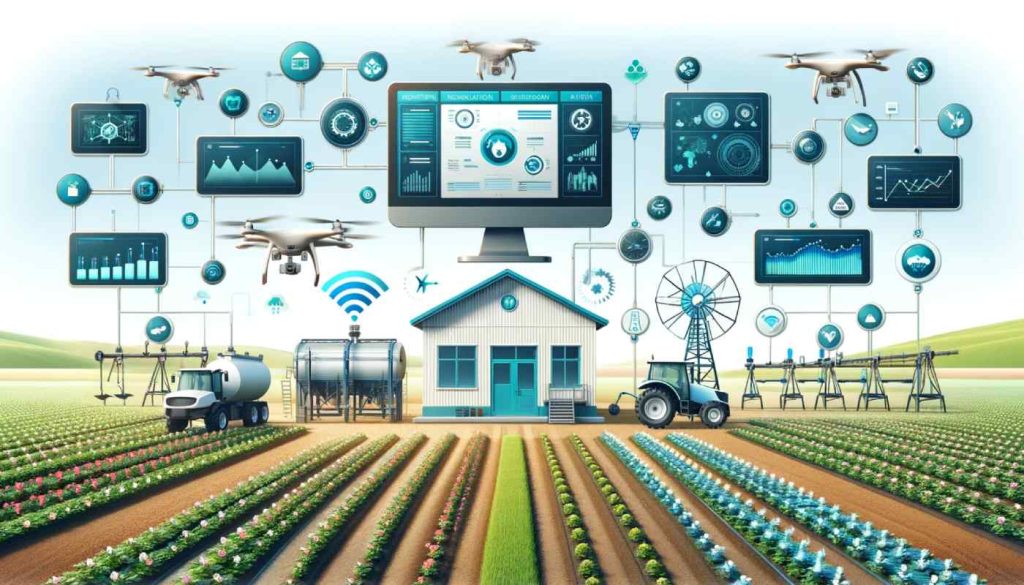
These technologies not only aid in day-to-day farm operations but also contribute to long-term sustainability and data-driven decision-making in agriculture.
- Precision Farming Technologies: At the forefront of FaaS is precision agriculture, which employs GPS technology, sensors, and imagery to optimize field-level management. GPS technology enables precise mapping of farm areas, allowing for efficient planting, fertilizing, and harvesting. Sensors placed in fields gather critical data on soil health and weather conditions, facilitating more informed farming decisions.
- Internet of Things (IoT) and Big Data: IoT devices in agriculture collect vast amounts of data from various sources like soil sensors, weather stations, and drones. This data, when analyzed, can reveal patterns and insights that lead to more efficient resource use, better crop yields, and reduced environmental impact.
- Artificial Intelligence (AI) and Machine Learning (ML): AI and ML algorithms process the data collected by IoT devices to provide predictive analytics for farmers. These technologies can forecast weather conditions, predict pest invasions, and suggest optimal harvesting times, making farm management more proactive rather than reactive.
- Drones and Robotics: Drones are used for aerial surveys of farmland, providing detailed insights into crop health, soil conditions, and more. Robotics, on the other hand, are increasingly used for tasks like planting, weeding, and harvesting, reducing the need for manual labor and increasing precision in farm operations.
- Automated Irrigation Systems: These systems use data from sensors to provide precise watering schedules, ensuring crops receive the right amount of water at the right time, thereby conserving water and improving crop yield.
The integration of these technologies into farming practices represents a significant leap forward in agricultural efficiency. By providing farmers with detailed insights and automating many of the labor-intensive processes, FaaS makes farming more sustainable and productive.
Global Reach: FaaS in Different Continents and Countries
FaaS: A Worldwide Phenomenon in Agriculture
The adoption of Farming as a Service (FaaS) is not confined to a single region but is a global phenomenon, with varying degrees of implementation across continents and countries.

The integration of technology in agriculture has found its way into various parts of the world, each adapting it to their unique agricultural landscapes and needs.
- India: In India, the rise of FaaS is closely linked to the increasing startup activity in the AgriTech sector. These startups are introducing innovative solutions to tackle the challenges faced by the vast number of small-scale farmers in the country. Services range from precision farming tools and analytics to equipment rental platforms, helping farmers increase efficiency and access markets more effectively.
- United States: The U.S. exhibits a significant adoption of FaaS, driven by a combination of advanced technology infrastructure and a focus on sustainable farming practices. American farmers are increasingly leveraging technologies like IoT, AI, and robotics to optimize farm operations, manage resources more efficiently, and boost crop yields.
- Europe: European countries are also embracing FaaS, with a strong emphasis on precision agriculture and sustainable farming. The integration of technology in farming practices in Europe is not only enhancing productivity but also playing a crucial role in addressing environmental concerns and food security.
The global spread of FaaS is facilitated by the universal need to make agriculture more productive, sustainable, and climate-resilient. This widespread adoption also points towards a future where technology-driven farming becomes the norm rather than the exception.
The geographic diversity in the adoption of FaaS underscores its versatility and adaptability to different farming conditions and challenges. It’s a testament to the fact that, regardless of location, technology has a crucial role to play in the future of agriculture.
FaaS Companies and Their Technological Solutions
Innovators at the Forefront of Agricultural Technology
The Farming as a Service (FaaS) landscape is rich with innovative companies that are reshaping agriculture through technology.
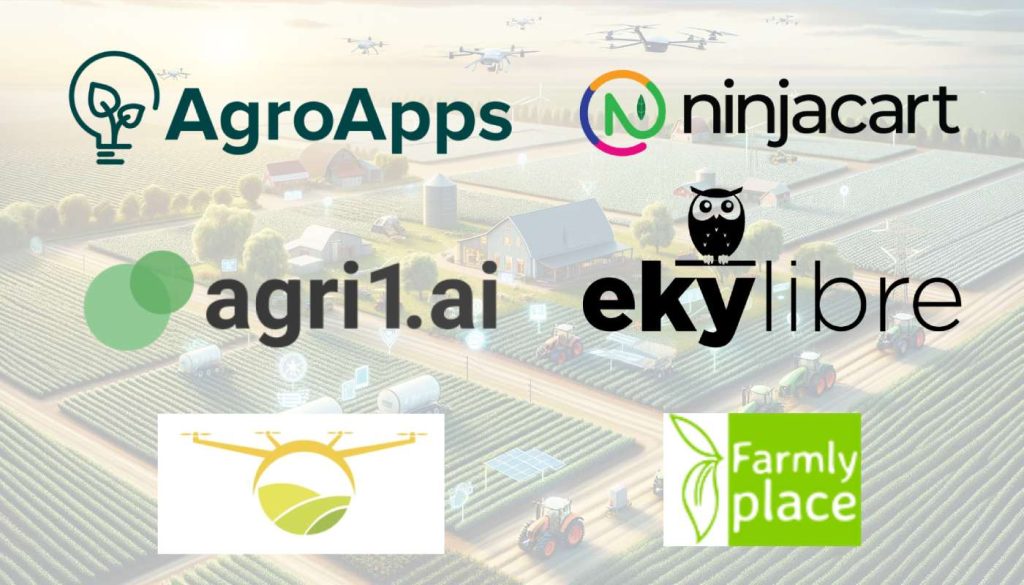
Here are some notable examples:
- Agroapps: Based in Greece, Agroapps specializes in agricultural ICT solutions. Their services range from advisory services, helping farmers plan optimal agricultural cycles, to climate and weather forecasting. They also provide tools like mylocalfarm and Turn2bio to connect farmers and facilitate online sales of produce.
- Ekylibre: This French AgriTech startup is revolutionizing farm management with a platform that combines various farming solutions. Ekylibre’s system integrates operational information to maximize productivity, offering features like inventory management, accounting, sales, purchases, and farm mapping.
- iDrone Services: Based in Zambia, iDrone Services provides aerial farm mapping and surveys using drones. They employ multi-spectral sensors for precise fertilizer application and 2D and 3D ortho crop mapping services, bringing advanced surveillance and data collection to farming.
- Farmlyplace: Operating out of Germany, Farmlyplace focuses on urban farming. They use up-cycled logistics containers for local produce growth, employing hydroponics for year-round operation. Their model is especially beneficial for city-based businesses and consumers, offering fresh produce with minimal transportation.
- Ninjacart: An Indian startup, Ninjacart, connects food producers directly with retailers and restaurants. Using in-house applications, they move large quantities of perishables daily, eliminating intermediaries and ensuring farmers get better prices while retailers receive fresh produce at competitive rates.
- agri1.ai: agri1.ai is developing a unique AI platform for agriculture, combining private and public agricultural data with live internet data for personalized farming guidance. It aims to increase profitability and adapt to evolving agricultural landscapes. The platform provides insights on weather, market prices, and more, assisting farmers in over 70 countries with diverse crop queries. (Disclaimer: A founder of agri1.ai is also editor of agtecher.com)
These companies exemplify the diverse ways FaaS is being implemented worldwide. They not only provide innovative solutions but also address various challenges in the agriculture sector, from enhancing productivity to ensuring environmental sustainability.
Market Growth and Future Prospects of FaaS
Expanding Horizons in Agricultural Technology
The Farming as a Service (FaaS) market is witnessing significant growth, with projections indicating a bright future.
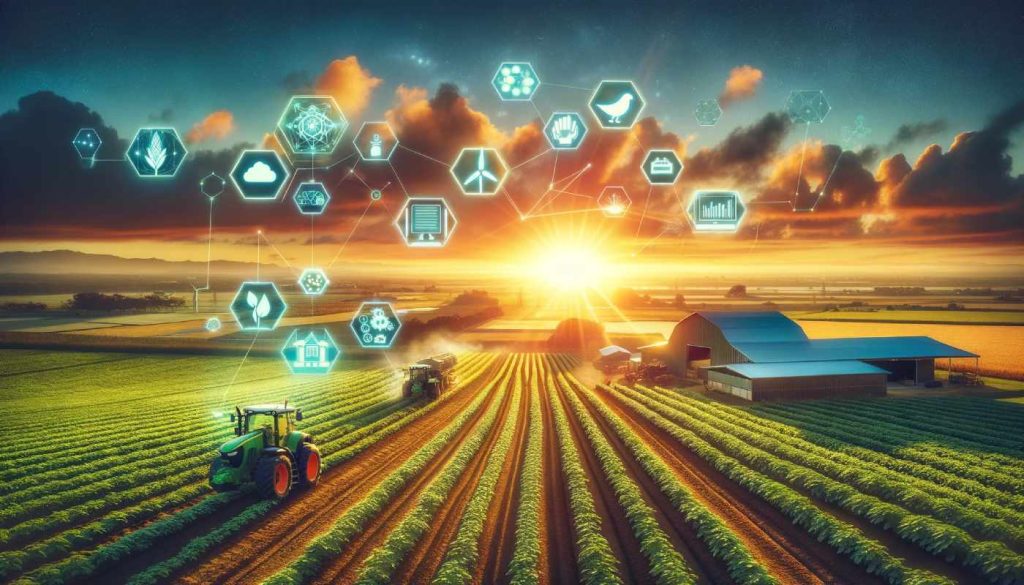
Here’s a look at the key data and trends shaping this market.
- Market Valuation and Growth Forecast: In 2021, the FaaS market was valued at $2.9 billion. Remarkably, it is estimated to reach $12.8 billion by 2031, growing at a compound annual growth rate (CAGR) of 16.1% from 2022 to 2031. This robust growth trajectory underscores the increasing adoption of technology-driven solutions in agriculture globally.
- Driving Factors: The surge in popularity of the Internet of Things (IoT) in the agricultural sector is a significant driver of this market growth. The use of IoT technologies provides real-time assistance to farmers, enabling them to respond effectively to changes in environmental conditions and optimize various farming processes.
- Market Segmentation: The FaaS market comprises several segments, including service type (farm management solutions, production assistance, access to markets), delivery model (subscription, pay-per-use), and end-user (farmers, governments, corporate, financial institutions, advisory bodies).
- Regional Insights: North America accounted for the highest revenue in 2021, attributed to the increasing acceptance of smart farming methods. However, the Asia-Pacific region is expected to register the highest growth rate during the forecast period, driven by government-friendly policies and a rising demand for food production.
- Impact of COVID-19: The pandemic had a positive impact on the FaaS market. The need for remote monitoring and management of agricultural activities during the pandemic highlighted the importance of farm management solutions, such as precision farming tools and analytics.
- Consumer Trends: The pandemic also led to significant changes in consumer preferences, with a stable demand for agricultural products and various government initiatives providing benefits and security to farmers. This shift has further fueled the growth of the FaaS market.
- Future Opportunities: The increasing number of AgriTech startups is expected to provide lucrative opportunities for the growth of the FaaS market. These startups are innovating and introducing new solutions, thereby expanding the market’s potential.
This data highlights the dynamic nature of the FaaS market and its potential to revolutionize agriculture with technology-driven solutions, making farming more efficient, productive, and sustainable.
Challenges and Limitations of Farming as a Service (FaaS)
Navigating the Hurdles in Agricultural Technology
While Farming as a Service (FaaS) offers numerous benefits, it also faces several challenges and limitations that need to be addressed for widespread adoption:
- Resistance from Traditional Farmers: One of the most significant challenges is the reluctance of traditional farmers to adopt new technologies. This resistance often stems from a lack of awareness, fear of high costs, or apprehension about the complexity of these new systems.
- Dependence on Technology and Infrastructure: FaaS heavily relies on advanced technologies, which necessitates a robust digital infrastructure. In many rural areas, issues like unstable internet connectivity and power outages can hinder the effective use of these technologies.
- Data Management and Security: As FaaS involves handling vast amounts of data, managing and securing this data is critical. Concerns about data privacy, potential misuse, and the need for effective data analysis tools are significant challenges.
- High Initial Investment: The transition to technology-driven farming can be cost-intensive, especially for small-scale farmers. The initial investment in equipment, software, and training can be a barrier to the adoption of FaaS.
- Training and Skill Development: There is a need for substantial training and skill development for farmers and agricultural workers to effectively use and maintain new technologies. This requirement for continuous learning and adaptation can be daunting for many in the agricultural sector.
- Market Accessibility: While FaaS aims to improve market access for farmers, there are still challenges in reaching all potential markets, especially for those in remote or underserved areas.
Addressing these challenges is crucial for the successful implementation and growth of FaaS. Solutions could include educational initiatives, subsidies or financial support for initial investments, development of user-friendly technology, and ensuring robust infrastructure in rural areas.
The Future of Farming as a Service
Embracing a New Era in Agriculture
As we conclude our exploration of Farming as a Service (FaaS), it’s clear that this model represents a significant shift in agricultural practices. FaaS, with its integration of advanced technologies like IoT, AI, drones, and precision farming tools, is not just a trend but a fundamental evolution in how farming is approached.
The potential benefits of FaaS are immense. By making farming more efficient, sustainable, and data-driven, FaaS promises to increase crop yields, reduce environmental impacts, and make farming more economically viable. The growth projections for the FaaS market, expected to reach $12.8 billion by 2031, reflect the growing recognition of these benefits.
However, the journey ahead is not without challenges. Overcoming resistance from traditional farming communities, addressing infrastructure limitations, managing data effectively, and making technology accessible and affordable are critical steps toward realizing the full potential of FaaS.
Looking forward, the future of farming appears to be one where technology and tradition converge, leading to a more productive and sustainable agricultural sector. As technology continues to advance and adapt to the needs of farmers, FaaS is poised to play a pivotal role in shaping the future of agriculture.
Farming as a Service is more than just a technological innovation; it’s a new chapter in the story of agriculture, one that holds the promise of a better, more efficient, and sustainable future for farmers and consumers alike.
Further sources used for this blog article: Market research IP, Market research SkyQuestt

